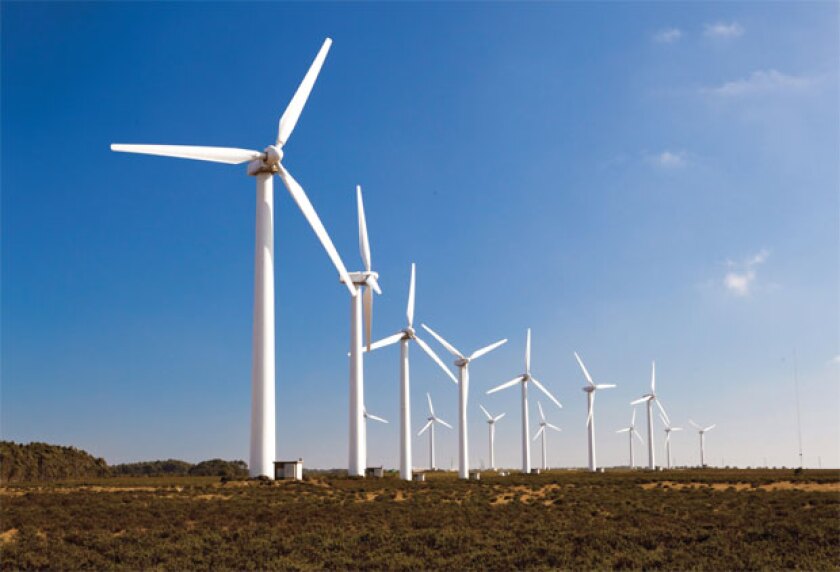Mexico has very good wind resources for power generation in the Isthmus region, Baja California, and Tamaulipas. The Isthmus is one of the most wind energetic places in the world due to the different atmospheric pressures in the Golf of Mexico and the Pacific which generates steady strong winds mostly from the north (Golf). Plant factor in such region is close to 50% which means you can achieve an average yearly power production during approximately 4,380 hours at rated capacity. This is a very large by European standards.
Wind power projects totaling 520MW are currently in operation, all in the Isthmus region. That number seems low considering that the Isthmus alone has a potential for more than 4000MW. There are several reasons why the development of wind power projects in Mexico has not reached the momentum like in countries as Denmark, Germany, Spain and lately the United States of America. In such countries two economic incentives have been used to accelerate the construction of wind farms with the clear political aim to increase the percentage of power generation with renewable energies because of climate change. The European incentive is a high feed-in tariff meanwhile the US approach is to grant production and investment tax credits. Both methods make wind projects profitable and financeable and the results in countries with such incentives are visible. Mexico does neither have a higher feed-in tariff for wind power nor does it grant tax credits for wind projects (immediate 100% depreciation is available but really does not represent a tax subsidy).
The legal framework under which wind power projects are developed in Mexico is based on the constitutional rule that all power generation, transmission and distribution for public service is reserved to the Mexican State being the Comisión Federal de Electricidad (CFE), the government owned entity which performs all of the aforementioned activities. The CFE has pushed wind power generation in two ways: building wind farms as public works projects owned and operated by CFE (La Venta I and La Venta II) or tendering long term power purchase agreements for wind power which are awarded to independent power producers (IPP). Five of such long term PPAs have been awarded, each for 100MW, and all for Spanish sponsored companies: three to Acciona and one to each of Iberdrola and ACS/Cobra. All five projects will be located in the Isthmus region and should be operational within two years. They are called La Venta III and Oaxaca I, II, III and IV.
The current legal framework allows for power generation by private entities not dedicated to public service, such for to the use of the power by the generating company itself or by its partners ("self-supply scheme") or for export which is mostly the case of the wind projects being developed in Baja California. In each case a permit from the Comisión Reguladora de Energía (CRE) is required.
The self-supply wind power projects currently in operation are all located in the Isthmus and are sponsored by Acciona, Iberdrola, EDF Energies Nouvelles and Gamesa; they total 425MW.
In order to resolve the problem of a limited transmission capacity to evacuate power from the wind farms in the Isthmus was resolved by the CRE and CFE by organizing an "open season". Developers of wind projects could reserve transmission capacity on a new transmission line at $108,000 per MW, subject to a top up to the real cost which is expected to be around $130,000 per MW. The reservation had to be backed by a letter of credit and around 2000MW were reserved by private entities developing self-supply projects. The new 400kV transmission line is built by CFE and should be ready later this year. New regulations from the CRE will reduce the wheeling tariffs for renewable power projects which will certainly make them more attractive.
There are projects of over 1500MW under development in the Isthmus region which have transmission capacity reserved in the open season. Why have these projects not been built yet?
The main problem developers have encountered is the shortage of debt financing. Since the financial crises started in the second half of 2008 commercial banks have withdrawn or drastically reduced commitments, are not any more willing to extend credit for the long term needed to make a project profitable, peso financing is scarce and expensive for projects whose revenues consist in pesos indexed to public CFE tariffs, reduction of such tariffs, the inability of the sponsors to guarantee any debt financing during construction since banks are very reluctant to take construction risk. In addition, some projects may have problems with the landowners or not find creditworthy off-takers.
If some of the current developers are not able to build their projects, a secondary market of undeveloped projects and the related transmission capacity should arise. CFE will have an important role in this regard, since the transfer of transmission capacity requires the approval by CFE. We will see what the future will be of such projects.
Thomas Mueller-Gastell
